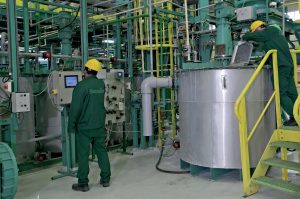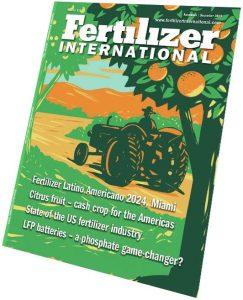
CRU Phosphates 2024
More than 370 delegates from over 150 companies and 40 countries gathered at the Hilton Warsaw City Hotel, Warsaw, Poland, 26-28 February, for CRU’s Phosphates 2024 conference.

More than 370 delegates from over 150 companies and 40 countries gathered at the Hilton Warsaw City Hotel, Warsaw, Poland, 26-28 February, for CRU’s Phosphates 2024 conference.

How does an engineering company complete the basic and detailed engineering for a phosphoric acid plant – and provide the full design for the off-site sections and utilities? Jan Tytgat, De Smet Agro’s Process Engineering Manager, explains an approach based on partnership with the technology licensor and client that combines engineering expertise with experience.

2024 is my tenth year as editor of Fertilizer International magazine. But, having joined CRU in January, it’s also a fresh start.

We look at current progress towards the greater use of recovered phosphorus, and whether there are lessons to learn from the success of the fast-growing carbon capture industry. We also highlight two pioneering European companies, EasyMining and Glatt, who are racing to bringing recovered phosphorus products to market.

CRU Events will convene the 2024 Phosphates International Conference & Exhibition in Warsaw at the Hilton Warsaw City Hotel, 26-28 February.

Fertilizer International presents a global round-up of phosphate rock, phosphoric acid and finished phosphates projects.

Kevin De Bois of Prayon Technologies describes an innovative process for removing magnesium from phosphate rock. Increasingly, phosphoric acid producers are looking to consume low-grade phosphate rock as a feedstock due to the prohibitive costs of high-grade rock sources. This has potentially negative consequences as the presence of impurities such as magnesium can negatively affect both the phosphoric acid process and the quality of the acid produced.

Brazil is a powerhouse agricultural economy, ranking as a top three global exporter of soybeans, corn and sugar. It is also the world’s number one producer and exporter of oranges and orange juice – as highlighted in our current issue (p18).

The cadmium and heavy metal content of sedimentary phosphates are of great concern. This has seen industry raw material consumption shift towards igneous phosphates or the blending of phosphate rocks from different sources. While rock blending can successfully reduce the heavy metal content of superphosphates, it needs to be accompanied by careful process adjustments, as Ian Hancock , Bradley Pulverizer’s vice president sales & operations, explains.

Leading companies such as Ballestra, Buss ChemTech, Elessent Clean Technologies (MECS) and Prayon Technologies are working together to solve the numerous production challenges facing the operators of integrated phosphate fertilizer production plants.